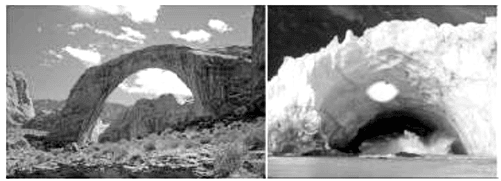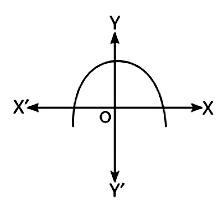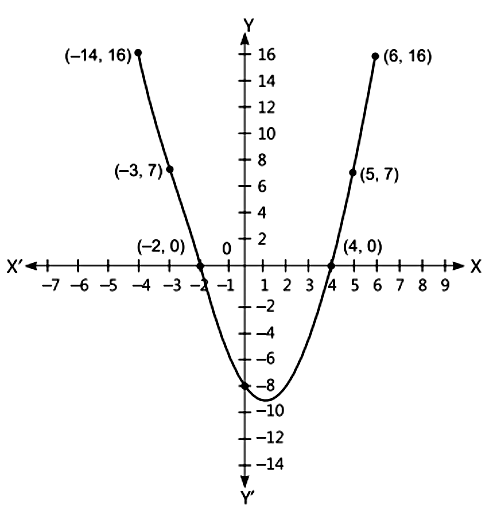Case Based Questions: Polynomials | Mathematics (Maths) Class 10 PDF Download
Q1: Read the source below and answer the questions that follow:
Ramesh was asked by one of his friends Anirudh to find the polynomial whose zeroes are -2/√3 and √3/4.
He obtained the polynomial by following steps which are as shown below:
Let α = -2/√3 and β = √3/4
Then,
α + β = (-2/√3) + (√3/4) = (-8 + 1) / (4√3) = -7 / (4√3)
and
αβ = (-2/√3) × (√3/4) = -1/2
∴ Required polynomial = x² - (α + β)x + αβ
= x² - (-7/4√3)x + (-1/2)
= x² + (7x/4√3) - 1/2
= 4√3x² + 7x - 2√3
His another friend Kavita pointed out that the polynomial obtained is not correct.
i. Is the claim of Kavita correct? (1 mark)
ii. If given polynomial is incorrect, then find the correct quadratic polynomial. (1 mark)
iii. Find the value of α² + β². (2 mark)
Or
iii. If correct polynomial p(x) is a factor of (x - 2), then find f(2). (2 mark)
Ans:
i. Given, α = -2/√3 and β = √3/4
∴ α + β = (-2/√3) + (√3/4) = (-8 + 3) / 4√3 = -5 / 4√3
and αβ = (-2/√3) × (√3/4) = -1/2
Yes, because value of (α + β) calculated by Anirudh is incorrect.
ii. Required polynomial = k(x² - (α + β)x + αβ)
k(x² + (5x/4√3) - 1/2)
= (k/4√3)(4√3x² + 5x - 2√3)
= (4√3x² + 5x - 2√3) where k = 4√3
iii. α² + β² = (α + β)² - 2αβ
= (-5/4√3)² - 2 × (-1/2)
= 25/48 + 1 = 73/48
Alternate method:
α² + β² = (-2/√3)² + (√3/4)²
= 4/3 + 3/16 = 64/48 + 9/48 = 73/48
Or
iii. We have, p(x) = 4√3x² + 5x - 2√3
Since, p(x) is a factor of (x - 2), then
p(2) = 4√3(2)² + 5(2) - 2√3
= 16√3 + 10 - 2√3 = 14√3 + 10
Hence, remainder is 14√3 + 10.
Q2: Read the source below and answer the questions that follow:
A group of school friends went on an expedition to see caves. One person remarked that the entrance of the caves resembles a parabola and can be represented by a quadratic polynomial f(x)= ax2 + bx + c, a# 0, where a, b and c are real numbers.
 i. Draw a neat labelled figure to show above situation diagrammatically. (1 mark)
i. Draw a neat labelled figure to show above situation diagrammatically. (1 mark)ii. If one of the zeroes of the quadratic polynomial (p-1)x² + px + 1 is 4. Find the value of p. (1 mark)
iii. Find the quadratic polynomial whose zeroes are 5 and -12. (1 mark)
iv. If one zero of the polynomial f(x) = 5x² + 13x + m is reciprocal of the other, then find the value of m. (1 mark)
Ans:
i. We have, f(x) = ax² + bx + c, a<0 It means a figure is a shape of parabola which open downwards. ii. Since, x = 4 is one of the zeros of the polynomial (p - 1)x² + px + 1.
ii. Since, x = 4 is one of the zeros of the polynomial (p - 1)x² + px + 1.
∴ (p - 1)(4)² + p(4) + 1 = 0
⇒ 16p - 16 + 4p + 1 = 0
⇒ 20p = 15
⇒ p = 3/4
iii. Required quadratic polynomial = k [x² - (Sum of zeroes)x + (Product of zeroes)] = k(x²-(-12+5)x+(-12)(5)) = k(x²+7x-60), where k is any arbitrary constant.
iv. Let the zeroes of the quadratic polynomial be α. Since, one zero of the polynomial f(x) is reciprocal of the other.
∴ Product of zeroes = (-1)² × (Constant term / Coefficient of x²)
⇒ α × (1/α) = 1 × (m/5) ⇒ m = 5
Q3: Read the source below and answer the questions that follow:
A student was given a task to prepare a graph of quadratic polynomial p(x)=-8-2x+x². To draw this graph, he take seven values of y corresponding to different values of x. After plotting the points on the graph paper with suitable values, he obtain the graph as shown below.
 i. What is the shape of graph of a quadratic polynomial? (1 mark)
i. What is the shape of graph of a quadratic polynomial? (1 mark)ii. Find the zeroes of given quadratic polynomial. (1 mark)
iii. The graph of the given quadratic polynomial cut at which points on the X-axis? (1 mark)
iv. The graph of the given quadratic polynomial cut at which point on Y-axis? (1 mark)
Ans:
i. The graph of a quadratic polynomial is a parabola which open upwards.
ii. The zeroes of the quadratic polynomial p(x) = -8 -2x + x² are x-coordinates of the points where the graph intersects the X-axis. From the given graph, -2 and 4 are the x-coordinates of the points where the graph of p(x)=-8-2x+x² intersects the X-axis. Hence, -2 and 4 are zeroes of p(x)=-8-2x+x².
iii. The graph of the given quadratic polynomial cut X-axis at points (-2, 0) and (4,0).
iv. The graph of the given quadratic polynomial cut Y-axis at point (0, -8).
Q4: Read the source below and answer the questions that follow:
Pooja was asked by her friend Arjun to find a polynomial whose zeroes are 3/√2 and -√2/5. She performed the following steps: Let α = 3/√2 and β = -√2/5. Then, α + β = 3/√2 + (-√2/5) = (15 - 2)/(5√2) = 13/(5√2) and αβ = 3/√2 × (-√2/5) = -3/5. Thus, the polynomial obtained is x² - (α + β)x + αβ = x² - 13x/(5√2) - 3/5 = 5√2x² - 13x - 3√2. However, her friend Neha pointed out an error in her solution.
i. Is Neha correct in her claim? (1 mark)
ii. If the polynomial is incorrect, find the correct polynomial. (1 mark)
iii. Find the value of α² + β². (1 marks)
iv. If the correct polynomial q(x) is a factor of (x+3), find q(-3). (1 marks)
Ans:
i. Yes, Neha is correct.
The sum of roots should be α + β = 3/√2 + (-√2/5) = (15 - 2)/(5√2) = 13/(5√2),
which is correct, but the final polynomial calculation by Pooja is incorrect.
ii. Correct Polynomial:
p(x) = k(x² - (α + β)x + αβ)
= k(x² - 13x/(5√2) - 3/5)
Multiplying by 5√2 to remove the denominator:
= 5√2x² - 13x - 3√2
where k = 5√2.
iii. Value of α² + β²:
α² + β² = (α + β)² - 2αβ
= (13/(5√2))² - 2(-3/5)
= 169/50 + 6/5
= 169+60/50 = 229/50.
iv. If q(x) = 5√2x² - 13x - 3√2 is a factor of (x + 3):
q(-3) = 5√2(-3)² - 13(-3) - 3√2
= 5√2(9) + 39 - 3√2
= 45√2 + 39 - 3√2
= 42√2 + 39.
|
127 videos|584 docs|79 tests
|
FAQs on Case Based Questions: Polynomials - Mathematics (Maths) Class 10
| 1. What are polynomials and how are they defined? |  |
| 2. How do you add and subtract polynomials? |  |
| 3. What is the difference between a polynomial and a polynomial function? |  |
| 4. What are the common methods for factoring polynomials? |  |
| 5. How do you find the roots of a polynomial? |  |

















